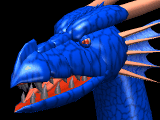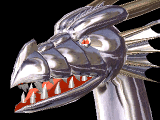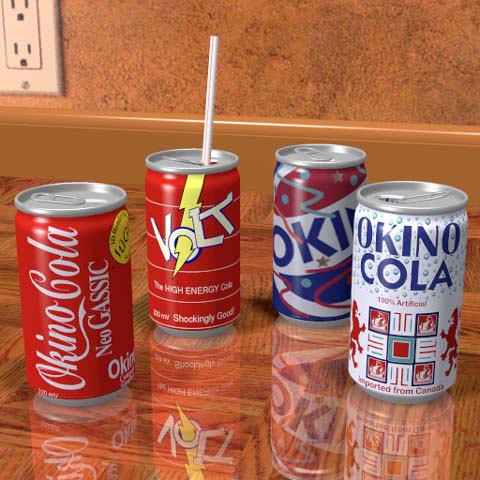Introduction
In this technique, beams are traced from the eye to the object and reflected beams terminate in a two dimensional map at their second hit. This is what is essentially meant by Chrome Mapping.
This method is so called because it enables any arbitrary pattern in the two dimensional chrome map space to be reflected onto a surface such as chrome approximating the effect of the environment reflecting into the surface of a highly reflecting object. The efficacy of this technique depends on the fact that most shiny objects do not have perfect surfaces and have some degree of roughness.
Problems
Chrome mapped title sequences are a lot on TV. Many of them have discontinuities between polygon faces. This is due to objects that are crudely built containing neighbouring polygons over which the surface normal and reflected vector is discontinuous. The reflected vectors map onto completely diffferent regions of the chrome map and hence the resulting colours exhibit visual discontinuity in animations. This is because maps contain coherent detail and runs independently across different faces of the object as it is moved.
Differences between Chrome and Texture Mapping
This technique is different from Texture Mapping as the texture changes with a change in the view point.
In case of texture mapping, the u-v co-ordinates are a function of the object only.
In case of Chrome Mapping, the u-v co-ordinates are a function of the objects position, surface normal and its orientation with respect to the eye.
So, Chrome Mapping is nothing but Texture Mapping, when animated.
Implementation
Chrome Mapping can be implemented by employing a sphere as an intermediate surface in the scheme. Mapping a two dimensional chrome map onto a sphere is difficult to obtain without distortion.
A commonly used mapping is the "longitude latitude" projection.

These spherical projections contain singularities at the poles. At these singularities, small changes in the reflection vector produces large changes in the texture co-ordinates.
In this case, as Rz -> +/- 1, both Rx and Ry -> 0 and so does Ry/Rx becomes undefined.
Translated into texture co-ordinates, as v -> 1 or 0, u starts to break down. These visually correspond to the spikes on the surface. This can be overcome byblurring the map at the poles and that is why chrome maps are generally soft.
Let us now look at some examples of Chrome Mapping



 Back to the main screen
Back to the main screen
Copyright - Sudhir R Kaushik (sudhir@cs.wpi.edu)





 Back to the main screen
Back to the main screen